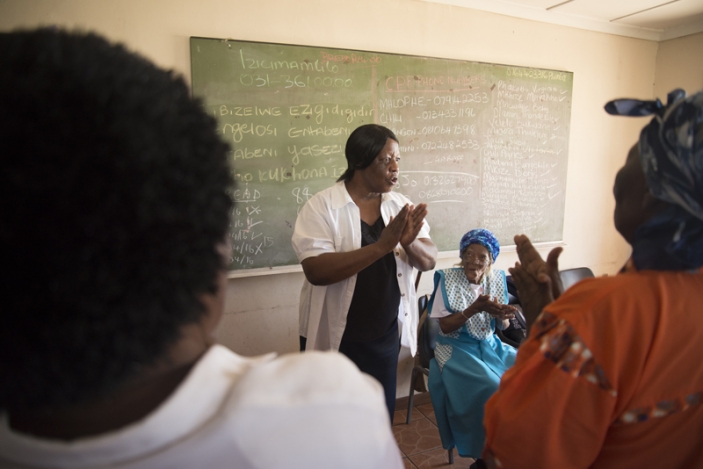
The heroes in the HelpAge story have always been the network members and particularly the older people who lead them. Heroes like rights campaigner in Jamaica Kenneth Hemsley who sadly died recently.
The HelpAge network is at the heart of everything we do. And that is why it is tremendously exciting our strategy to 2020 has shifted a gear to focus on supporting our members.
Inspiring change through network leaders
Our network is what gives us impact, legitimacy and strength. My work over the years has focused on supporting older leaders to take action.
I joined HelpAge in 1999. Back then, we had no website or digital presence at all. Our communications output was limited to a black-and-white copy of Ageways, our “how to” network publication. Seventeen years later, the newsletter still shares best practice on ageing and development, from fundraising and campaigning to health and nutrition.
By 2002 we had come a long way. That year we launched the State of the World’s Older People report at the UN’s Second World Assembly on Ageing in Madrid. It was a ground breaking event, with 60 older leaders from across our global network attending and actively lobbying for change with governments and UN leaders.
In 2007 we launched Age Demands Action, which continues to support older people to build advocacy skills and develop their own local campaigns to transform local services and influence global frameworks.
Our older citizen monitoring programme has pioneered grassroots-level action using data and evidence collected by older people’s groups to provide the basis for local policy change.
We have broken through many barriers as a global network. We have helped bring about expanded pension coverage, improved local transport and health care, and launched the first measure of quality of life in older age across the world – the Global AgeWatch Index. Just last year, we played a pivotal role in getting disaggregated data recognised in the new UN Sustainable Development Goals.
A network-first approach for HelpAge
We aim to deliver joint action, joint research, joint learning and to create greater change together. Today, with digital technology, we can reach out more easily, organise with greater effect and unite more people to support our cause.
In April 2016, we adopted a new theory of change. It describes in simple terms what we do, why we do it, and how our support to the network contributes towards our vision of a world in which all older people can lead dignified, healthy and secure lives.
We aim to:
Our civil society sector is evolving internationally to play an increasingly catalytic role. By working with a diverse range of organisations globally, I believe we can make our network more effective, resilient and sustainable.
We are stronger together and now, as governments start to wake up to ageing as a pressing issue, we need all of our collective energy, ideas and passion to make change happen.
You can find out more about how we are strengthening regional and sub-regional networks in the latest issue of Ageways (PDF – 1.3mb).
